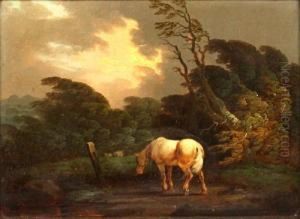J. Schelfhout Paintings
Johannes Schelfhout was a Dutch painter, etcher, and lithographer, known for his remarkable contribution to the Dutch Romantic movement. Born on September 15, 1787, in The Hague, Netherlands, Schelfhout started his artistic career as an apprentice to landscape artist J.H. Prins. He eventually established himself as a master in his own right, gaining recognition for his winter scenes and landscapes.
Schelfhout's work was characterized by meticulous attention to detail and a keen observation of the natural world. His paintings often depicted the Dutch countryside, with particular emphasis on the changing seasons and the interplay of light and shadow. He was highly influential in the development of landscape painting in the Netherlands and was considered a forerunner in the portrayal of winter landscapes, a genre that would come to be embraced by many Dutch artists.
Throughout his career, Schelfhout expanded his artistic repertoire by including etchings and lithographs, which also gained considerable acclaim. He became a member of the Royal Academy in Amsterdam and was awarded several honors for his contributions to Dutch art. His work was exhibited widely, both in the Netherlands and abroad, and his paintings were sought after by collectors and art enthusiasts of his time.
Schelfhout's influence extended beyond his lifetime through his students, who included notable figures such as Andreas Schelfhout, who was among the most prominent Dutch landscape painters of the 19th century, and Wijnand Nuijen, an early representative of the Hague School. Johannes Schelfhout passed away on April 19, 1830, in The Hague, leaving behind a legacy that would continue to inspire Dutch artists for generations to come.
